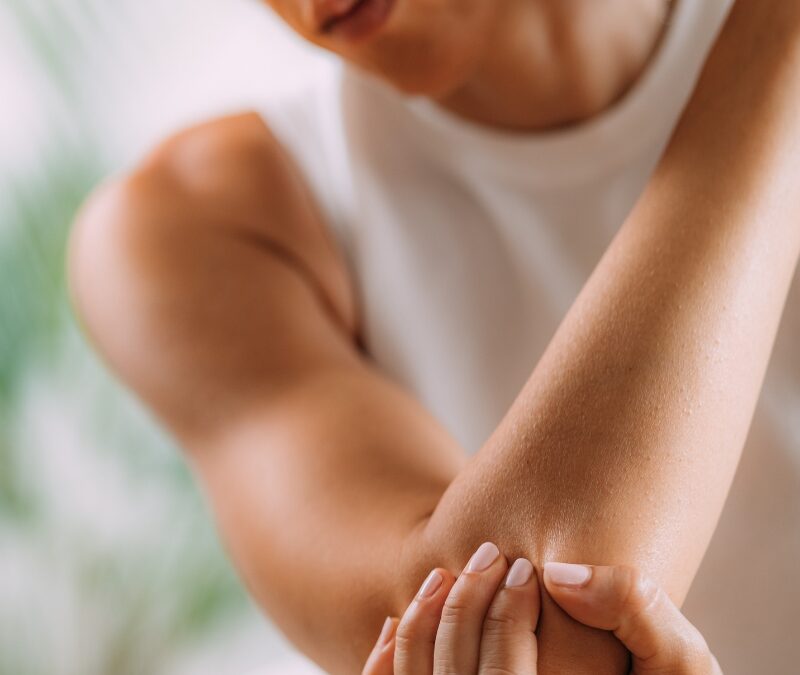Whether you’re a keen tennis player, a padel enthusiast, or someone who spends long hours typing, that nagging pain on the outside of your elbow can be incredibly frustrating. Commonly known as tennis elbow, this condition doesn’t just affect athletes. We see it regularly at Activate Physio, especially as racket sports like tennis and padel continue to grow in popularity.
In this blog, we’ll explore what tennis elbow is, what causes it, how it relates to padel and other activities, and most importantly, how physiotherapy can help you recover and stop it from coming back.
What Is Tennis Elbow?
The medical term for tennis elbow is lateral epicondylitis or lateral epicondylalgia. It refers to pain and inflammation around the bony bump on the outside of your elbow, where the forearm’s extensor tendons attach. These tendons help you extend your wrist and fingers, grip objects, and stabilise your wrist during movement.
Over time, repetitive or forceful use of these muscles can cause tiny microtears in the tendon. This leads to irritation, pain, and weakness, especially when lifting, gripping, or twisting objects.
Tennis Elbow or Padel Elbow: Are They the Same?
Essentially, yes. “Padel elbow” is just tennis elbow that occurs in padel players. The difference lies in how the injury develops. Tennis involves longer strokes and higher swing speeds, while padel uses shorter, more frequent shots with a solid racket. Both activities can overload the same forearm tendons and cause pain in the same area.
So, whether you play tennis, padel, squash, or pickleball—or even if you don’t play racket sports at all—the condition itself is the same and responds very well to physiotherapy.
Why We’re Seeing More Cases
At Activate Physio, we’ve noticed a rise in elbow injuries related to racket sports. As more people take up tennis and padel socially, many develop pain from overuse, poor technique, or inadequate preparation.
It’s not just athletes, though. Tradespeople, office workers, and anyone doing repetitive gripping or twisting can experience the same problem. Common triggers include increasing training too quickly, using equipment that’s not suited to your body, or lacking the strength and flexibility to support repetitive movements.
Common Symptoms
Tennis elbow usually starts with pain or tenderness on the outer side of the elbow, which may radiate down the forearm. You might notice discomfort when gripping, lifting, or twisting objects like a doorknob or coffee cup. Some people experience weakness when carrying things or shaking hands, along with stiffness in the morning or after repetitive use.
The pain often builds gradually and may worsen during sport, gym workouts, or long hours at a desk.
How Physiotherapy Can Help
Physiotherapy is one of the most effective ways to treat tennis or padel elbow because it targets the root cause, not just the symptoms. At Activate Physio, our goal is to help you restore tendon health, improve strength, and prevent the pain from coming back.
Treatment usually begins by reducing pain and inflammation. Your physiotherapist may use hands-on therapy to release tight muscles, apply taping or bracing to support the elbow, and suggest ways to modify activity while you heal. Gentle stretching, heat or ice, and education about aggravating movements are also key in this early phase.
Once pain begins to settle, we work on restoring flexibility and mobility in your wrist, elbow, and shoulder. This helps reduce stiffness and ensures that other parts of your body aren’t overloading the injured area.
The next step is strengthening. This is crucial for tendon recovery. Research shows that progressive loading and specific strengthening exercises help tendons repair and regain resilience. Your physiotherapist will guide you through exercises that suit your stage of recovery, gradually increasing resistance as your strength returns.
Finally, we look at contributing factors. For athletes, that might mean reviewing your racket grip size, weight, or technique. For non-athletes, we might assess your workstation setup or lifting habits. Once you’re pain-free, we’ll help you safely return to sport or work through a gradual, structured plan.
Other Treatment Options
While physiotherapy is the mainstay of recovery, some people benefit from additional treatments such as shockwave therapy for chronic cases, dry needling to release tight muscles, or platelet-rich plasma (PRP) injections to promote healing. Your physiotherapist can discuss whether these are suitable for you.
Preventing Recurrence
Once your elbow has healed, prevention becomes the focus. Warming up properly, strengthening your wrist, forearm, and shoulder muscles, and checking that your racket grip size and weight are right for you can make a big difference. Gradually increasing your training load, working with a coach on technique, and taking time to stretch and recover are also important for long-term tendon health.
How Long Does Recovery Take?
Recovery time varies depending on how long you’ve had symptoms and how consistently you follow your rehabilitation plan. Mild cases can improve within six to eight weeks, while more chronic cases may take several months. The good news is that with the right physiotherapy program, most people make a full recovery and return to sport or work without ongoing issues.
When to Seek Help
If your elbow pain has lasted more than a few weeks, keeps coming back, affects your grip strength, or interferes with daily activities, it’s worth booking an assessment. Early treatment can prevent the condition from becoming chronic and help you get back to what you love sooner.
At Activate Physio, we see tennis and padel elbow often, and physiotherapy consistently delivers excellent results. Through a combination of hands-on treatment, tailored exercise, and expert guidance, we can help you reduce pain, restore strength, and stay active without discomfort.
If you’re struggling with elbow pain, don’t wait for it to worsen. Book an appointment with one of our physiotherapists at Activate Physio and take the first step toward a pain-free return to your favourite activities—on and off the court.

